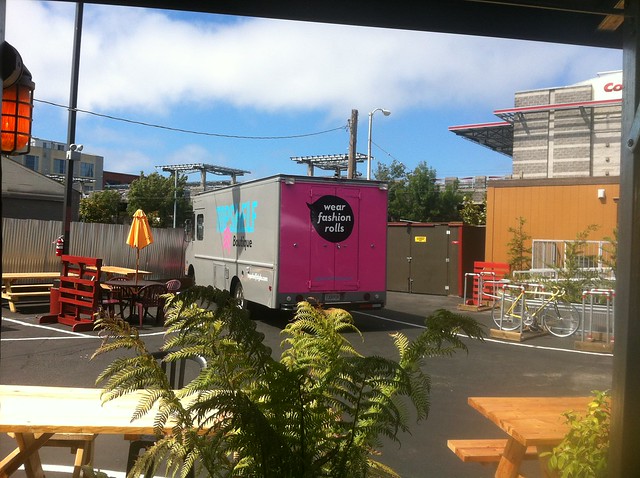Sharing the Road With Food Trucks - Tips to Take Your Fashion Boutique Mobile
It’s all about freedom and flexibility these days. Food trucks offer cooks the opportunity to reach more customers than they would with a permanent location, and customers in search of a quick bit appreciate the casual vibe that a mobile food offering brings.

Photo by cjmartin via Flickr
So it’s a natural evolution of the marketplace that other product lines are trending toward mobile, starting with clothing.
Style on the go
Residents of New Jersey, Washington, D.C., Delaware, California and Texas may have already spotted rolling fashion retailers in their neighborhoods. Shoppers can walk up and browse outfits and accessories, try them on, and avoid a trip to the mall or the big department stores. Owners like the ability to run their own business and not be tied to a particular location or national brand—freedom indeed!
If you're considering opening a mobile fashion business, here are a few tips to keep in mind:
Check local laws
Though clothing retailers may not need health permits like food trucks, the American Mobile Retail Association cautions that different communities have different zoning laws regarding where people can legally conduct business and sell products to the public, especially out of a vehicle. States and other municipalities also may require special licenses for driving and parking a truck on city streets.
Offer more than clothes
Street Boutique, a successful fashion truck which operates in Washington D.C., Maryland, and northern Virginia, changes its inventory regularly. It also hosts shopping parties for larger groups of customers, and goes on-site to businesses for corporate get-togethers. Street Boutique is also very active in social media, runs customer contests, has an e-newsletter, and works to make the experience fun and memorable for shoppers.

Photo by Michael Lemmon via Wikimedia Commons
Figure out a good money method
Cash-only may be perfect for food truck owners, where a burrito or BBQ sandwich is only a few bucks, but a fashion crowd will be different. Since fashion trucks generally have a pricier inventory, owners should consider an electronic card processing system, which will also provide better records. Tie this into online accounting software to keep excellent track of your records, including organizing and scanning receipts, tracking expenses and running reports.
Be ready to spend
The AMRA estimates it costs around $20,000 to $30,000 to get started with a truck and basic inventory of clothing and accessories, which could include everything from handbags and scarves, to nail polish and jewelry. The truck should be insulated and comfortable for customers and have room for storage. Owners also should develop relationships with clothing wholesalers, including designers or brands you may not find at traditional stores. Emily Duran, who drives the Passionista Fashion Truck in Delaware, told Delaware Online that she installed extras touches in the 18-foot trailer like track lighting and a space heater, and can hold up to 10 customers at a time.
Lisa loves lighting. Tom Dixon is her favorite, but just about any great pendant or sconce gets her excited.

 Delicious
Delicious Digg
Digg StumbleUpon
StumbleUpon Propeller
Propeller Reddit
Reddit Magnoliacom
Magnoliacom Newsvine
Newsvine
Comments
Post new comment